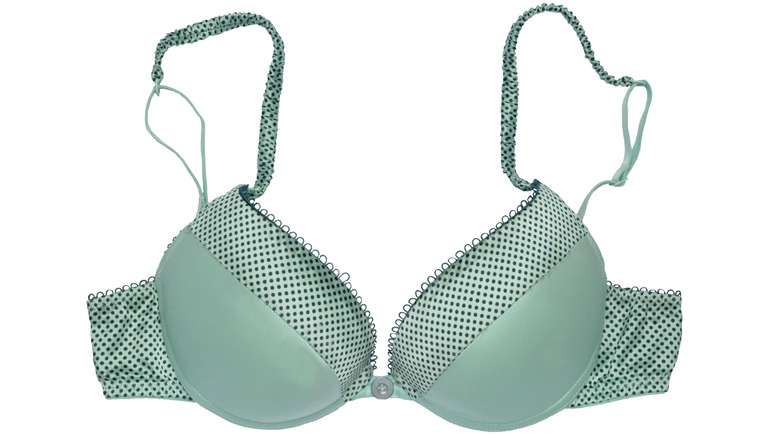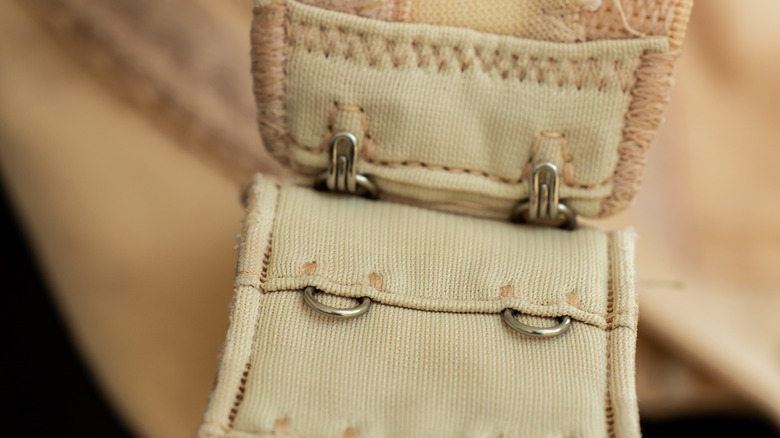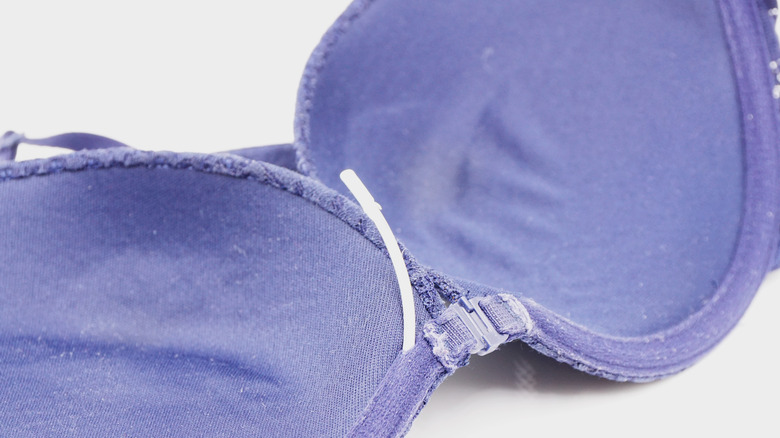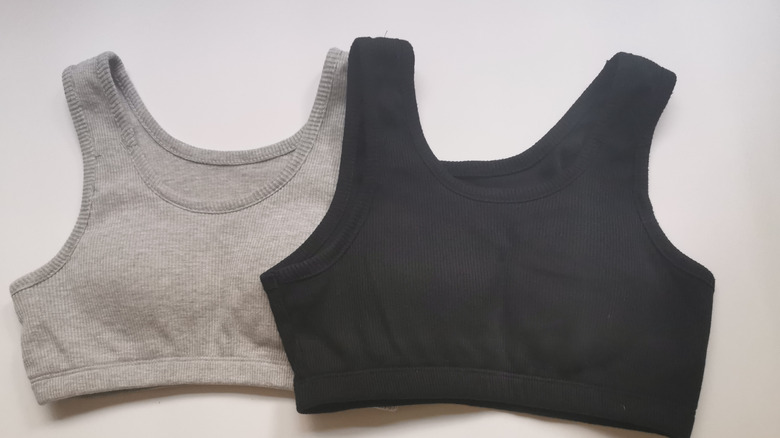How You Know It's Time To Throw Out Your Bra
They say a friend is like a good bra: hard to find, supportive, uplifting, and always close to your heart. That's certainly a good bra. What happens when a good bra becomes not-so-good? There's no saying for that, so it may be hard to tell when your previously supportive, uplifting bra slips into the category of, well, trash. Like it or not, bras have an end of life when they need to be tossed. The difficulty may be in knowing when to part with your dear friend.
The lifespan of an everyday bra is about six to twelve months, or after it has been worn about 180 times, per Real Simple. However, it's important to care for your bras the correct way, so they last as long as possible. The first rule to extend their life: Avoid wearing the same bra more than one day at a time. A bra needs a rest for its elastic to bounce back (via Martha Stewart). You should have a few go-to bras on hand to rotate their use. Secondly, wash bras every three wearings (per Huffington Post), more frequently in the summer. Hand-washing is preferred, but you can use the washing machine. Close the bra's hooks, put it in a lingerie bag, and wash in cold water on the gentle cycle using a detergent formulated for delicates. Air-dry it flat on a towel or on a drying rack. Never use the dryer, even on low heat.
Signs your bra has had it
You've outgrown it or it has outgrown you. Do you wear a squeezy-tight bra from back in the day out of nostalgia, or one whose cups gape since you lost weight? Not good. A bra is supposed to have snug and comfortable cups (via Bustle), and rest against the sternum between your breasts, for the best support. If you have boob spillage from the cups, the bra is too tight. If there's a space between the cup and your skin, it's too big. Keep in mind that breast size can change over the years, during and after pregnancy, with age, and with weight fluctuations, altering the size bra you need. You should always retire a bra that no longer fits properly.
Something (or everything) in the bra stretched. The band provides 70% of your bra's support, according to Wacoal. When you first wear a bra, the band should fit best on the loosest hook, Lyn Lewis, CEO of lingerie company Journelle, told the Huffington Post. With repeated wear, the band will stretch, and you'll need to use progressively tighter hooks. Once you reach the point that the tightest hook is too loose, or if the band is sitting higher on your back than it used to, it's time for a new bra. As for straps, if they're falling off your shoulders or if you can lift them more than a half-inch, they may have lost their stretch — and their ability to support your breasts.
More signs of your bra's demise
It's lost its shape. A bra that has turned shapeless will not give you your best shape. When you wear a tee shirt, does your bra outline clearly show through, asks Lyn Lewis (per the Huffington Post)? Has the padding in the cups shifted or become creased? Are there lumps, bulges, or unevenness in the cups (per Bustle)? These are signs that the bra has lost its ability to support you.
The underwire is poking through the fabric. This is annoying and can be painful. "Even if you try to put it back in and sew the area shut, that's a temporary fix and it will likely come out again," Laetitia Lecigne, creative director at Jockey, told Real Simple.
It just looks like it's done. Maybe the seams are frayed, the fabric is faded, the lace is yellowed, or tiny hair-like elastic threads are poking through the fabric. Those are all hints the bra has seen better days, and you should be heading to the store for a new one.
When to toss your hard-working sports bra
If any bra puts in overtime, it's the sports bra. It supports you and protects your breasts from bouncing due to gravity and other sudden movements while working out. It also sees lots of sweat.
How often you need to replace a sports bra depends on the activity you're doing and how frequently (training for a marathon will wear out a bra more quickly than doing yoga, Julianne Ruckman, product line manager for bras at Brooks Running, told PureWow), and the size of your breasts. Bigger breasts stretch out a bra faster.
It's essential to replace a sports bra in a timely manner, because exercising in a non-supportive bra can lead to discomfort as well as possible breast sagging in the future.
Using a laundry detergent for sportswear is a good idea, as it kills more bacteria from sweat, thereby increasing the life of your sports bras.




